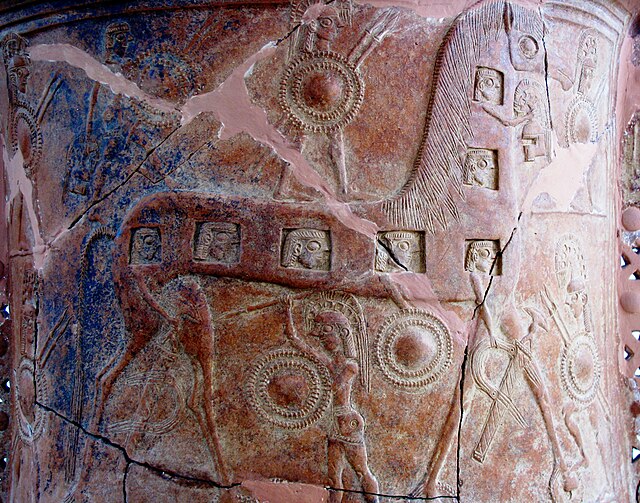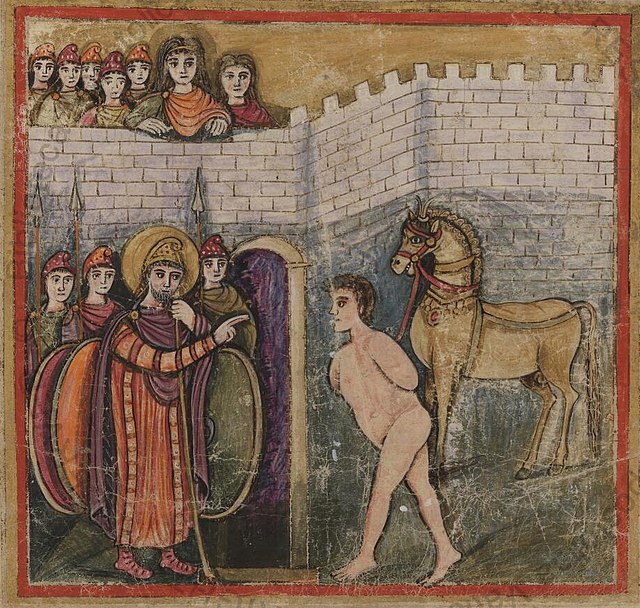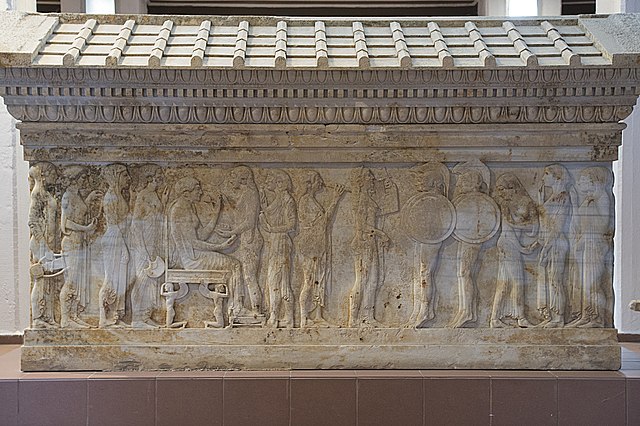In Greek mythology, the Trojan Horse was a wooden horse said to have been used by the Greeks during the Trojan War to enter the city of Troy and win the war. The Trojan Horse is not mentioned in Homer's Iliad, with the poem ending before the war is concluded, and it is only briefly mentioned in the Odyssey. But in the Aeneid by Virgil, after a fruitless 10-year siege, the Greeks constructed a huge wooden horse at the behest of Odysseus, and hid a select force of men inside, including Odysseus himself. The Greeks pretended to sail away, and the Trojans pulled the horse into their city as a victory trophy. That night, the Greek force crept out of the horse and opened the gates for the rest of the Greek army, which had sailed back under the cover of darkness. The Greeks entered and destroyed the city, ending the war.
The Mykonos vase (750 to 650 BC), with one of the earliest known renditions of the Trojan Horse (note the depiction of the faces of hidden warriors shown on the horse's side)
Sinon is brought to Priam, from folio 101r of the Roman Vergil.
The Phoenician ship called hippos, from the Assyrian city of Khorsabad, 8th century BC
Depiction of the Trojan Horse on a Corinthian aryballos (c. 560 BC) found in Cerveteri (Italy)
The Trojan War was a legendary conflict in Greek mythology that took place around the 12th or 13th century BCE. The war was waged by the Achaeans (Greeks) against the city of Troy after Paris of Troy took Helen from her husband Menelaus, king of Sparta. The war is one of the most important events in Greek mythology, and it has been narrated through many works of Greek literature, most notably Homer's Iliad. The core of the Iliad describes a period of four days and two nights in the tenth year of the decade-long siege of Troy; the Odyssey describes the journey home of Odysseus, one of the war's heroes. Other parts of the war are described in a cycle of epic poems, which have survived through fragments. Episodes from the war provided material for Greek tragedy and other works of Greek literature, and for Roman poets including Virgil and Ovid.
The Golden Apple of Discord by Jacob Jordaens
The Burning of Troy (1759–1762), oil painting by Johann Georg Trautmann
Polyxena Sarcophagus in Troy Museum
The Judgement of Paris (1599) by Hendrick van Balen the Elder. Gemäldegalerie, Berlin








